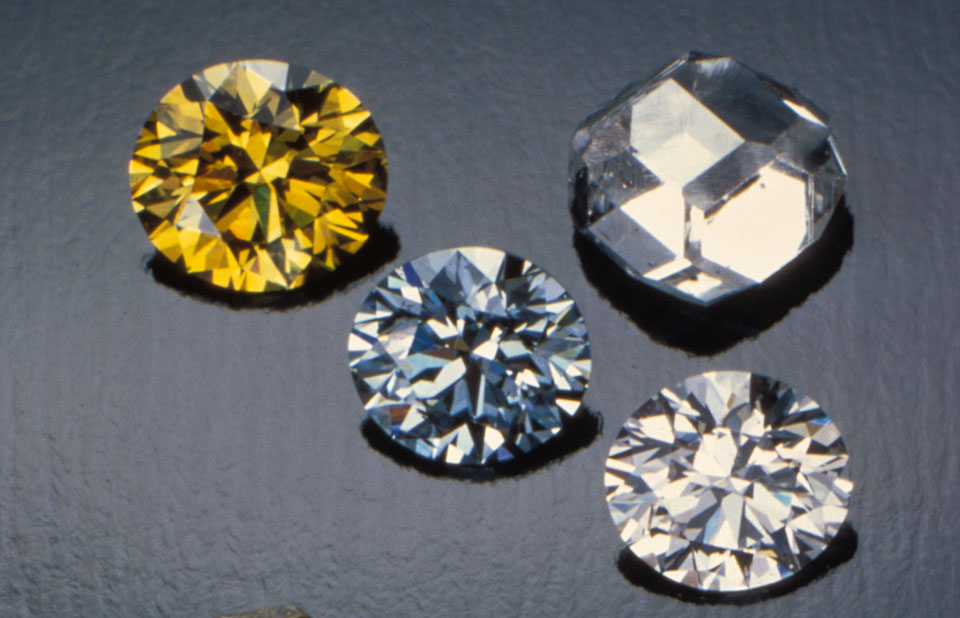Introduction
In a world where sustainability and ethics are gaining momentum, the diamond industry is witnessing a significant shift. Enter lab diamond substitutes – a fascinating array of alternatives to natural diamonds that offer brilliance, durability, and ethical peace of mind. In this article, we’ll delve into the realm of lab diamond substitutes, exploring their characteristics, benefits, and how they stack up against traditional diamonds.
What Are Lab Diamond Substitutes?
Lab diamond substitutes refer to gems that mimic the look and feel of natural diamonds but are created through artificial processes in controlled laboratory environments. These substitutes offer a compelling alternative to traditional diamonds, addressing concerns related to ethical sourcing and environmental impact.
Natural Diamond Alternatives
While natural diamonds have long been prized for their rarity and beauty, lab-grown alternatives are increasingly gaining popularity. These substitutes include moissanite, cubic zirconia (CZ), white sapphire, and synthetic diamonds. Let’s take a closer look at each option.
Moissanite
Moissanite is a naturally occurring mineral that is often used as a diamond substitute due to its striking resemblance to diamonds. It possesses exceptional brilliance and fire, making it a popular choice for engagement rings and fine jewelry. Unlike diamonds, moissanite is not carbon-based but shares similar optical properties, offering an affordable and ethically sourced alternative.
Cubic Zirconia (CZ)
Cubic zirconia, or CZ, is a synthetic gemstone that closely resembles diamonds. It is affordable and widely available, making it a preferred choice for fashion jewelry and costume pieces. While CZ may lack the hardness and durability of diamonds, it offers exceptional sparkle and clarity at a fraction of the cost.
White Sapphire
White sapphire is a natural gemstone that shares some similarities with diamonds, including its colorless appearance and brilliance. While sapphires are not as hard as diamonds, they offer excellent durability and are often used as accent stones in jewelry designs. White sapphires provide a more affordable alternative to diamonds without compromising on elegance.
Synthetic Diamonds
Synthetic diamonds, also known as lab grown diamonds, are produced using advanced technological processes that replicate the natural diamond-growing environment. These diamonds are chemically and physically identical to natural diamonds, offering the same brilliance, hardness, and clarity. Unlike natural diamonds, which are mined from the earth, synthetic diamonds are created in laboratories under controlled conditions, making them a sustainable and ethical choice.
Pricing and Affordability
One of the primary advantages of lab diamond substitutes is their affordability compared to natural diamonds. While natural diamonds command high prices due to their rarity and mining processes, lab-grown alternatives are typically priced lower, making them accessible to a wider range of consumers. This affordability factor has contributed to the growing popularity of lab diamond substitutes in the jewelry market.
Durability and Quality
Lab diamond substitutes are known for their durability and quality, offering excellent resistance to scratching, chipping, and discoloration. Whether it’s moissanite, cubic zirconia, white sapphire, or synthetic diamonds, these substitutes are designed to withstand daily wear and maintain their brilliance over time. With proper care, lab diamond substitutes can last a lifetime, making them a practical and long-lasting choice for jewelry.
Environmental Impact
Unlike traditional diamond mining, which can have significant environmental consequences, lab diamond substitutes have a minimal ecological footprint. The production of lab-grown diamonds requires less energy and water compared to mining operations, reducing greenhouse gas emissions and habitat destruction. By choosing lab diamond substitutes, consumers can support sustainable practices and contribute to environmental conservation efforts.
Ethical Considerations
Ethical concerns surrounding diamond mining, such as human rights abuses and environmental degradation, have prompted many consumers to seek alternative options. Lab-grown diamonds and other substitutes offer a transparent and ethical supply chain, free from the conflict and exploitation associated with traditional diamond mining. By opting for lab diamond substitutes, consumers can enjoy peace of mind knowing that their jewelry is ethically sourced and produced.
Popular Misconceptions
Despite their growing popularity, lab diamond substitutes are often subject to misconceptions and myths. Some believe that lab-grown diamonds are inferior to natural diamonds in terms of quality and value, while others question the authenticity of synthetic gems. However, advancements in technology have bridged the gap between natural and lab-grown diamonds, offering consumers high-quality alternatives that rival their mined counterparts.
Choosing the Right Substitute
When selecting a lab diamond substitute, it’s essential to consider factors such as budget, aesthetics, and personal preferences. Whether you opt for moissanite, cubic zirconia, white sapphire, or synthetic diamonds, each substitute has its unique characteristics and appeal. By evaluating your priorities and consulting with a trusted jeweler, you can find the perfect substitute that meets your needs and exceeds your expectations.
Conclusion
Lab diamond substitutes offer a compelling alternative to natural diamonds, providing consumers with ethical, affordable, and high-quality options for their jewelry needs. Whether you’re drawn to the brilliance of moissanite, the affordability of cubic zirconia, or the eco-friendly appeal of lab-grown diamonds, there’s a substitute to suit every style and budget. By embracing lab diamond substitutes, you can adorn yourself with beautiful gems that sparkle with conscience and confidence.

